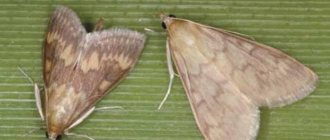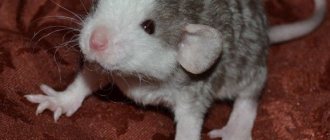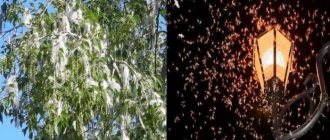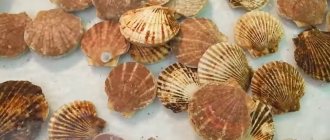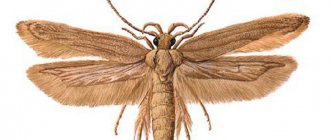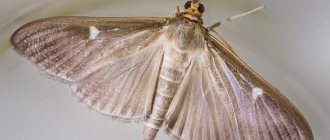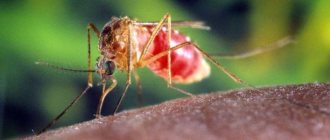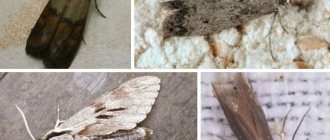Description and characteristics of the insect
People call moths all insects belonging to the order Microlepidoptera.
Adults are similar in appearance to small butterflies, which are mainly nocturnal or crepuscular .
Another feature of the moth is the structure of the jaw apparatus. It is a gnawing type, which allows these insects to easily feed on dense and rough food.
Their powerful jaws help them chew even wood and fruit seeds, and their unpretentiousness in food determines the wide distribution of these pests.
greater damage to plants, tissues and products when it is in the caterpillar stage.
Appearance of a moth
Although there are many types of these insects, they are similar in appearance.
The moth has an inconspicuous appearance, the size is 5-9 mm.
Their size does not exceed 5-9 mm. They fly poorly and are dull in color. There are 2 main types of moths living in houses: clothes moths and furniture moths. The first has a light brown color, and the second is gray, but with a quick inspection it is difficult to identify these differences.
Externally, the caterpillars of these insects and other species of butterflies are no different. They rarely exceed 1.5 mm in length, so they are difficult to notice. The larvae are sedentary, love dark places and eat a lot.
How long does he live?
Before becoming adults, these insects go through the egg and larval stages. The caterpillar lives from 3 to 10 months. At this time, it actively feeds and destroys clothing, furniture, food, and forms a cocoon in which its further development occurs.
After the wings appear, the adult does not live long - only 2-4 weeks (this depends on the type of pest).
expectancy at all stages of moth formation is about a year.
Where does it live?
Depending on the species , the habitat of insects will be different. Food moths lay eggs in food.
Food moths lay eggs in food.
It can be:
- cereals;
- candies;
- vermicelli;
- cookies, etc.
Furniture moths feed on outerwear made from natural woolen fabrics, fur, etc. They often develop in closets and suitcases where sunlight does not penetrate.
Indoor moths can develop anywhere in the house where there are favorable conditions for it, as well as products made from natural fabrics such as cotton, silk, etc.
In addition, these insects can live on different plants (cabbage, potatoes, poplar, chestnut, wormwood) and harm them. They also live in beehives, where they feed on beebread, honey and wax.
In nature, some types of moths feed on the horny formations of animals and birds. They settle in their burrows or nests. There is a species of moth that lives in the horns of buffalos or antelopes, and in the shells of dead turtles.
Mole: photo
If you find it difficult to determine the type of pest, look at how each moth looks in the photo and compare it with the parasites that you have.
Clothes moth
- The color of the moth is from light beige to pale yellow, the hind wings are several tones lighter than the front wings, and can be slightly transparent.
- The tips of the fore wings and the lower edge of the hind wings are covered with feathery hairs.
- The wingspan of the butterfly reaches 1–2 centimeters.
- The head has long whiskers that can twist and bend at unnatural angles, as if they had been singed.
- The insect has an oblong body up to 1 centimeter long, the same color as the wings.
food moth
- The color of the front wings of the food moth is marbled, speckled, in brown and beige tones.
- The hind wings are plain, light beige, covered with long hairs resembling a fluffy fringe.
- The wingspan of the butterfly reaches 1–2 centimeters.
- On the head there are 2 straight, thin whiskers diverging to the sides, like antennas.
- The body is elongated, covered with hairs, up to 1 centimeter in length.
If you have seen a clothes or food moth at the butterfly stage in your home, it means it has already laid its larvae somewhere.
Life cycle of a moth
The moth lays 50-80 eggs per clutch in a dark place, the size of which is no more than 0.5 mm. During their development, a caterpillar appears. On clothing, females choose places near pockets and on collars; They love old rugs or blankets that have not been used for a long time.
Moth eggs go through a long stage of development to the state of an adult.
The caterpillars begin to feed on what the eggs were laid in (fabric, food, etc.). After emerging from the pupa, females soon begin to mate with males and lay eggs. They do this not far from the place where they appeared. After mating and before laying eggs, 5-6 hours pass, and after another 5-6 days the female dies, because fulfilled its purpose - gave birth to offspring.
If we talk about clothes moths, they produce only 1 generation per year, while, for example, cabbage moths can produce up to 5-6 generations in the spring-autumn period.
Notes[ | ]
- Moli / Devyatkin A.L. // Meotian archaeological culture - Mongol-Tatar invasion. - M.: Great Russian Encyclopedia, 2012. - P. 675. - (Big Russian Encyclopedia: [in 35 volumes] / chief editor Yu. S. Osipov; 2004-2017, vol. 20). — ISBN 978-5-85270-354-5.
- Kaabak L. V., Sochivko A. V.
Butterflies of the world. - M.: Avanta+, 2003. - ISBN 5-94623-008-5. - Etymological dictionary of Slavic languages. v. 19 - M.: Science. 1992. p. 203—205
- Hangay G., Gruner SV, Howard FW, Capinera JL, Gerberg, EJ, et al. (2008). Moths (Lepidoptera: Heterocera). Encyclopedia of Entomology, 2491-2494. doi:10.1007/978-1-4020-6359-6_4705
- Key to insects of the Russian Far East. T. V. Caddisflies and Lepidoptera. Part 2 / under general. ed. P. A. Lera. - Vladivostok: Dalnauka, 1999. - P. 102. - 671 p. — ISBN 5-7442-0910-7.
- Gerasimov A. M.
Caterpillars. - 2nd. - M.-L.: Publishing House of the Academy of Sciences, 1952. - T. 1. - (Fauna of the USSR). - Balashov Yu. S.
Parasitism of ticks and insects on terrestrial vertebrates. - St. Petersburg: Nauka, 2009. - P. 357. - Deyrup M., Deyrup ND, Eisner M., Eisner T.
A Caterpillar that Eats Tortoise Shells (English) // American Entomologist. - 2005. - Vol. 51, no. 4. - P. 245-248. Archived from the original on December 16, 2010. - Devyatkin L. A. Moli. Great Russian Encyclopedia. 2004
Pest varieties
The most common:
- Food. There are several types of it. They differ from each other in the products in which they prefer to reproduce . They have some external differences in the color of the wings: the grain moth is off-white, the flour moth has a black-brown pattern, and the granary moth is black-orange. The length of the wings in all individuals does not exceed 10 mm. The larvae are transparent white, at 6 weeks of age they reach 1.5-2 mm and begin to pupate.
- Clothes. Smaller, reaching no more than 3 mm in length. There is no pattern on her wings; they are light brown. The larvae are yellowish in color with a brown head.
- Furniture. Similar to the previous species, but the size of adults reaches 8 mm. The coloring is slightly darker and the larvae are white. It is distinguished by a well-developed jaw apparatus, providing the necessary pressure for eating dense food. Has a large intestine and stomach.
- Cabbage. The gray color makes it inconspicuous. There is a light pattern on the wings. This color allows for good camouflage. These insects are larger in size than house moths . The duration of maturation of the larvae in the egg is 72 hours. The caterpillars are 12 mm long and green in color. First they live in the lower part of the leaf, and then crawl to its upper part, where they create a cocoon. During the maturation period, 4 moults occur.
- Poplar. It has an inconspicuous appearance, its length is up to 7 mm. There is fringe on the hind wings. It enters the house through open windows. The maturation of the larvae lasts 2-3 weeks, they have a yellowish tint.
- Potato. They are distinguished by a grayish-brown tint. The wings have a pattern of brownish-yellow stripes and spots, the edges indicated by dark lines. The fringe on the hind wings larger than the wings themselves. The length of insects is 10-16 mm. The larva reaches 10-12 mm, it is almost completely transparent. Its color depends on its diet: the one that feeds on leaves becomes green, and the one that feeds on tubers becomes pale gray.
- Wax. Quite large, reaching 20 mm, while males are smaller than females. At rest, females fold their wings and males spread them. The period of egg development is 10 days. As the caterpillar matures, it molts 10 times.
The food moth is an insect for which your kitchen can become its habitat.
Types of moths
According to the biological classification, such organisms are classified as keratophages. The harmful insect looks like a moth with a yellow-brown, pale gray or whitish coloration with silvery pollen on the wings. The color depends on the habitat and type of moth. These insects belong to the cosmopolitan type and are distributed over most of the planet. Some representatives of an extensive family live in the same territory with humans.
There are moths in apartments:
- furniture;
- wardrobe;
- fur coat;
- cereal;
- grain;
- black;
- fruit and others.
The lifespan of an adult is only 2–4 weeks. During this time, the insect manages to cause significant damage to the household, interior details, wardrobe items, grain crops and food products. The parasite has underdeveloped wings and is unable to travel long distances.
Interesting! Pregnant females are inactive and hardly fly. The damage is caused predominantly by males.
Indoor moth
This is a collective name for all domestic keratophagous parasites that cause damage to grocery products, clothing, and interior items. Indoor moth species include a large group of household parasites. You will find their names below. They differ only in the power source and subtle external signs, which only a specialist can recognize. These pests have virtually no need for sunlight.
Clothes moth
The parasite is distinguished by the yellowish color of its wings. The larvae mature in the cavities of woven materials. They are capable of chewing out large spaces in them. The presence of the parasite is difficult for an uninitiated person to detect. The basis of the diet is:
- natural cotton;
- wool threads;
- textile upholstery of upholstered furniture;
- knitted materials.
Such a moth with a photo and description is presented in special reference books and thematic literature. It has been well studied. It has two pairs of purple wings. The span is about 22 mm. The larva is covered with a thin layer of whitish-turbid coating. It is held on the fabric with a hard cover.
Fur moth
This parasite causes trouble for owners of expensive fur products. Having a unique anatomical structure of the oral apparatus, it easily absorbs natural hair with the carotene it contains. The adult has shiny dark yellow speckled wings with silvery pollen. Their span: 14–15 mm. The fender liners are light gray in color. Worm-shaped larvae. They have an almost transparent body.
5 best ways to remove moths from a fur coat
Through the skin one can discern the internal structure and even the contents of the stomach. Has 8 abdominal legs. After saturation, the fur moth goes to its nest, along the way continuing to destroy the fibers that interfere with its progress.
Furniture moth
This parasitic insect has a pale yellow color and golden wings. These types of moths in an apartment cause great damage to interior items and wooden structures. The larvae become active only after gaining access to adequate nutrition. This moth lays eggs in crevices of wooden structures and under furniture upholstery, intensively absorbing it.
On a note! Females of this variety of keratophages are incredibly fertile. They are capable of laying up to 300 eggs over 15 days. Furniture moths avoid sunlight. Therefore, its larvae hide in a tiny cocoon, which is difficult to detect.
Potato moth
The front wings of this species of moth are gray-chestnut in color with dark streaks and yellowish spots. The hind wings are colored brownish. There is fringe along the edges. The insect lays oval-shaped eggs. At the initial stage they are light, as they develop they darken. It especially zealously destroys the following crops:
- Potato.
- Solanaceae.
- Eggplant.
- Tomatoes.
Varieties of potato moth have different colors of the body and wings - greenish, pink, grayish, yellow. It depends on the distribution area, diet and natural and climatic conditions. Pests gnaw out the pulp of the fruit. Damaged vegetables spoil quickly. One female lays up to two hundred eggs during her life cycle.
Important! Potato moth causes significant damage only to household plots and agricultural crops (read more about how to deal with potato moth in the article here). The parasite harms vegetables stored in a cellar or basement for winter storage. A large population of insects can destroy the entire crop grown on a farm.
Cabbage moth
This parasitic insect is just as dangerous an enemy of cultivated plants as the previous variety. It is small in size, which makes detection very difficult. It feeds on cultivated plants of the cruciferous family. Adults are colored grayish. There are specimens of chestnut and brownish-brown colors.
Cabbage moth: how to destroy, control measures and the best remedies, read this article.
The wingspan reaches 17 mm. The eggs are oval, light green or lemon in color. The forewings of adults are bordered with light fluffy fringe. On the back it is longer. The caterpillars of this species of keratophages lack pigmentation. As the larva develops, it changes color from light green to dark brown. The basis of the diet consists of the following vegetable crops:
- radish;
- white, cauliflower and Brussels sprouts;
- swede;
- mustard.
The main feature of the cabbage moth is its poor flight ability. The pest spends its entire life in the place where it hatches. The insect lives in all countries in the middle zone of the planet, mainly in rural areas.
food moth
This type of pest, also called a kitchen pest, is found in:
- cereals;
- walnuts;
- peanuts;
- dry mixtures;
- bulk products;
- flour.
If food products of this type are stored for a long time in an unventilated container, there is a high probability of developing food parasites. They often end up in apartments in damaged store packaging.
There are several types of such keratophages:
- Grain moth is a common type of harmful moth that causes damage to grain crops in the places where they grow, ripen and are stored. Adult insect length: 11–20 mm. It has a yellow-grayish color. The body is covered with brown scales. On the hind wings there is a wide fringe that shimmers with a silver coating.
- Cereal. Such individuals eat mainly bulk groceries, but are not averse to eating other food products.
Kitchen pests do not contaminate food with toxic substances. For complete disinfection, it is enough to subject the contents of the container to heat treatment. Lepidopteran parasites of this species moisten food products with their own excrement, which quickly leads to their spoilage. They create favorable conditions for the emergence and reproduction of pathogenic fungal and mold cultures.
Such microorganisms not only harm human health, but also negatively affect the caloric value of cereals. Juvenile food moths have a reddish body color. At the end of the life cycle they acquire a yellowish or whitish color. If cereals are stored in an unventilated container for a long time, black moths may infest them.
The dark color of the parasite is characteristic of males. They cause major damage to food products. At this time, females look for a secluded place, devoid of sunlight, to lay eggs. Eats any cereals, flour, nuts. Rarely starts in metal and glass containers. Typical habitat is plastic and ceramic containers.
Chestnut moth
Such parasites harm leaves and other green spaces in a unique way - they gnaw holes in the pulp. It is difficult to immediately understand that the plant is infected. Adults reach one centimeter in length. The color is bright – brick-pink, less often – orange with milky-white spots.
The body and legs are randomly covered with black scales. The larvae are spindle-shaped. The unique anatomical structure of the mouthparts allows the pest to gnaw through dense chestnut leaves. The female lays 50 eggs at a time. A dangerous enemy of garden and park trees.
Important! According to observations, the period of activity of the parasitic insect lasts about two years. In one season, each female makes several clutches, significantly increasing the population. The activity of the parasite leads to exhaustion and weakening of the tree, its inability to survive the winter cold. As a result, the plant dies.
Ermine moth
Despite its name, this parasite belongs to the street category of keratophages. The basis of the diet is not valuable fur, but various useful plants - apple trees, bird cherry, etc. The pest is similar in morphological characteristics and lifestyle to other fruit keratophages. This representative of the moth-like lepidoptera is distributed in temperate and tropical zones of the globe. A characteristic feature is its attractive color.
The wings are pyramidal in shape with a small raised protrusion. You can recognize the ermine moth by the following characteristic external differences:
- Impressive size of an adult compared to domestic keratophagous species. The length exceeds 2 cm, the wingspan is 16–22 mm.
- The front wings of females are painted snow-white with a silvery tint. Covered with black spots. Each wing has at least 20 contrasting inclusions.
- The head is crowned with thread-like antennae of a smoky ash-gray tonality.
- The forewings of males are dark in color with a characteristic rounding.
- All individuals of this species have thread-like scales on their heads. They are pressed tightly to the forehead and resemble a protruding crest.
This variety of keratophagous is called bird cherry because of its excessive love for this fragrant plant. Such parasites are characterized by sexual dimorphism. Females are slightly larger than males. During the mating season, a special genital secretion is secreted. The period of feeding activity lasts 35–42 days. During this time, they manage to cause great damage to fruit trees and shrubs.
Apple (ermine) moth: measures to combat the pest on trees are described in more detail in the article here.
Poodle moth
This is the most mysterious representative of the Lepidoptera family. Discovered in 2009 in Canaima National Park in Venezuela. The wingspan of the poodle moth is estimated to be 28–38 mm. The biological characteristics have not yet been studied, and the diet has not been established. The Venezuelan keratophagus has unusual physical parameters. A comparative examination with other varieties of moths has not been carried out.
Therefore, the Latin name was not assigned. In appearance, the insect resembles a miniature white fluffy poodle. It has thread-like antennae that perform a sensory function. This creature is difficult to find in nature. Therefore, detailed studies are postponed indefinitely.
Wood moth
This is the collective name for street moths that feed mainly on wood products. The poplar pest is also included among them. The peak activity of the parasitic insect occurs during the period of fluff maturation. Such keratophages often invade apartments. Wood lepidopteran pests are small moths with a wingspan of up to one centimeter.
They are distinguished by variegated colors with a predominance of pink, brown, orange and yellow tones. The hind wings are decorated with fringe. Females lay oval, beige-colored eggs, flattened on their sides. Such keratophages consume tree leaves, gnawing holes in them, which weakens the plant and leads to its death. In living areas they react to light and cluster around bright objects.
Apple moth
This fruit pest is a real scourge of gardeners. Entomologists classify the apple moth as a member of the ermine lepidopteran family. It is a small, brightly colored moth. It has two pairs of white wings speckled with black. The activity of the pest manifests itself during the flowering period of apple trees and the ripening of fruits.
The main affected area is deciduous mass. They have the ability to weave webs. Females lay mucus-coated eggs in tree bark. About 65 pieces at a time. During the summer period, one generation hatches. A colony of harmful insects can destroy entire gardens. The danger is posed by the larvae, and adults lack a proboscis for feeding.
How does it reproduce
To fight these insects, you need to know how moths reproduce .
This process includes steps such as:
- egg;
- a caterpillar that turns into a chrysalis;
- adult.
Only male moths fly. The female crawls around in search of a secluded place in which she lays eggs.
Moth caterpillars eat a wide variety of things and foods.
The rate of egg hatching directly depends on the ambient temperature:
- if it is less than 13°C, the ripening period is up to 37 days;
- at 33°C – 7 days.
Reasons for appearance
To effectively combat moths, you need to find the source and reasons for its entry into the apartment .
The main reasons for the appearance of moths:
- Flew in through an open window on its own. If there is no protective net on it, then this insect can fly into the house and take root in it. Using a mosquito net will eliminate such troubles.
- Brought into the house along with things. These could be woolen or knitted clothes that you took from your grandmother. It is not necessary that these are adult pests: their larvae, which are difficult to notice, are sufficient. To prevent this from happening, things should be well ventilated and left in the sun for several hours before bringing them into the house.
- Came with old furniture. The larvae can be found in the upholstery of old sofas. They look like small white cocoons. Almost all old furniture is contaminated, so if there is a need to bring it into the house, you must first treat the fabric with special means.
- Introduced by domestic animals . Larvae may be on their fur, so you should periodically wash the animals with special shampoos that help get rid of any parasites.
- It came with cereals that were improperly stored in a warehouse, or with dried fruits and mushrooms purchased at the market.
Most often, moths enter an apartment along with new things that contain fur and wool.
Moth control products
After cleaning, you can begin treating the room in various ways. Below you will find detailed instructions on how to deal with moths.
- To destroy indoor moths, you can purchase ready-made products - an aerosol, a fumigator or a section.
- All surfaces of furniture, cabinets, and rooms are treated with an aerosol. After use, do not enter the room for several hours, then be sure to ventilate it. Not suitable for use in the kitchen.
- Fumigators can be used throughout the apartment, as they do not emit substances harmful to humans. The downside is that the coverage is small, so it is advisable to install several devices. Completely gets rid of pests in a few days.
- Sections are almost ineffective in controlling moths, but are excellent for repelling females.
- Natural remedies are best for killing kitchen moths. Thoroughly treat all surfaces with baking soda solution. Wash the cracks of the kitchen set with water and vinegar diluted in it. Place the remaining food in hermetically sealed jars.
- Check plumbing fixtures for serviceability and repair any leaks.
- Place allspice grains, bay leaves or chestnuts in the cupboards.
- It is advisable to cover the ventilation holes with gauze.
Read here: How to defrost a refrigerator quickly and correctly: TOP 5 simple ways to remove ice
How to fight insects
It doesn’t matter which way the moth got into the apartment. It is necessary to begin fighting it immediately after identifying the first adults or larvae. The sooner you start doing this, the faster you will be able to get rid of the pest.
Chemicals
Previously, tablets made from a mixture of naphthalene and camphor were often used, but the danger is that their vapors in high concentrations are harmful to humans .
Now there are many safe means:
- "Antimol." Available in tablets. It is enough to put 3-4 pieces in the closet. The tablets are valid for 21-28 days, then they are thrown away. The product is used to repel, not kill, moths.
- "Dezmol" is a drug similar to the previous one. Available in tablets.
- "Molemore." Validity is up to 6 months, but no more than 2 records can be used in one room. The drug repels, but does not destroy, insects.
- “Suprozol” is a drug in the form of an aerosol. Spraying in places where moths accumulate helps to effectively destroy adults and larvae.
- “Supromit” is a liquid product used to treat furniture surfaces. Its validity period is several months.
- "Moskitol" is a product in the form of plates. They are laid out in places that they want to protect from the penetration of moths.
- "Raid Antimol" is a popular drug. Available in the form of plates, gel or spray. The method of use depends on the release form.
- "Raptor". When sprayed onto clothing, it leaves no traces on it and has a pleasant smell.
Antimol is a reliable means of killing moths.
Special sections effectively repel moths. They have a pleasant aroma and can be safely used even to protect children's things. Mount them at the top of the cabinet. 1 section is capable of protecting a space of up to 0.5 m³. At the same time, in a room with an area of up to 15 m³, no more than 2 pieces can be used. The section is valid for 4-6 months.
Destruction of larvae
To fight them you will have to make efforts, because... larvae hide in the most inaccessible places. Clothes moths are easier to remove than food moths. To do this, take things outside and shake them out well, then leave them in the sun, and if possible, wash them at 60°C. After this, they are treated with moth repellents, and the cabinets are also treated.
If food moths are detected, you must urgently get rid of all contaminated food products. Adults are destroyed using aerosols. The shelves on which the products are located are treated with liquid agents or sprays (they must be stored in sealed containers).
Using aerosols, moth larvae are destroyed.
What folk remedies exist
Many people are afraid of the toxicity of chemicals, so they prefer proven traditional methods.
It must be remembered that most of these products do not destroy moths, but simply repel them.
Commonly used folk remedies:
- Orange peel. Place it in places where moths can lay eggs. It repels adult insects. The peel should be changed at least once a month.
- Laundry soap. They put it in the closet and also wash furniture with it. The downside is that the smell gets absorbed into the clothes.
- Lavender, wild rosemary, tobacco, chamomile, fir. It is enough to change bouquets of these herbs once every six months.
- Fir or lavender oil. Place an open bottle in the closet or soak cotton wool in it.
- Geranium. It is enough to have 1 such plant in a room, and its smell will effectively repel pests. It is better to place the flower on the window so that insects cannot get into the house.
- Rosemary, garlic, cloves. They are placed in jars with cereals.
- Vinegar. They are used to treat the surfaces of bedside tables, cabinets, and storage rooms.
- Temperature. Moths are afraid of both heat and cold. Clothes should be washed at 60°C, exposed to the sun at a temperature of about 30°C, or exposed to frost – 10°C.
Folk remedies can help fight moths.
Ways to get rid of moths
Humanity has come up with many ways to fight moths. Such methods can be divided into two categories: chemical and folk. The first method involves the use of special toxic drugs, while the second involves the use of natural remedies, as well as various unconventional techniques.
Chemicals
Today, there are several types of drugs for exterminating household pests on the market. All products are relatively safe for humans, but it should be remembered that they contain chemicals, so they must be used with caution. The most popular and effective are:
- Fumigators are special devices that run on electricity and produce toxic gases that kill insects. Manufacturers claim that such fumes do not harm humans, but this has not been proven.
One of the most effective devices for fighting insects. It is advisable to ventilate the room after use. - Aerosols and sprays are the most effective and fastest means of combating both flying moths and their larvae. The drugs are sprayed into the air and also treated with contaminated objects and clothing. The active substance acts instantly. Such products should be used very carefully if there are animals or small children in the apartment.
- Tablets and plates are relatively inexpensive products that are placed on the inside side walls of cabinets and in the items themselves. These products for the most part do not kill, but repel insects by smell, so if there are already moth larvae in the house, they will be ineffective.
- Traps are small boxes that, using a special dispenser that releases female pheromones, attract male moths, and an adhesive substance inside the structure prevents them from getting back out. Thus, the number of insects is significantly reduced, as a result of which the intensity of their reproduction also decreases. Traps are placed in places where the pest may live.
Traditional methods
The advantage of folk methods of fighting moths is that they are not only effective, but also completely harmless to humans. Another advantage of such funds is their low cost and wide availability. The most famous and effective methods :
- The pest cannot tolerate the cedar aroma. By placing pieces of wood and cedar branches in a closet or pantry, you can save not only your favorite fur coat, but also other things from moths. The essential oil of the same name has the same effect.
The vapors of this oil at room temperature are not harmful to humans or other creatures. Acts as a repellent - Ordinary laundry soap also helps to get rid of moths: just spray it on the walls and shelves of a cabinet or cabinet, and then leave a few remnants there.
- Naphthalene is a remedy that has been known for hundreds of years and still works to this day. However, scientists have recently discovered that the drug contains strong carcinogens, so using naphthalene against food moths is not recommended.
- Citrus peels are a traditional folk effect. Moth butterflies cannot stand the aroma of orange, tangerine, lemon and grapefruit, so fresh peels of these fruits, laid out on shelves with things or products, will prevent the pest from laying eggs in these places. Unfortunately, this method can only be used for prevention, since it will not help destroy the larvae.
- Geranium, lavender, mint, thyme, cloves and rosemary - all these herbs have a similar effect to the previous option.
Lavender, like all herbs, should be dried to achieve better results. - Vinegar and garlic are excellent helpers for fighting moths. A small amount of vinegar is added to warm water, then the walls and shelves of the furniture are thoroughly wiped with this solution, after which garlic cloves are placed between the items. This method can be considered drastic, since the smell of garlic is not liked not only by pests, but also by people. Nevertheless, it is very effective and, most importantly, safe.
- Temperature effect. Moths die at too high or low temperatures, so it is enough to wash infected clothes in hot water and then iron them. Products that are not subject to such treatment must be regularly taken out into severe frost or hung in the sun in summer.
This is interesting: how to get rid of food moths in an apartment
Each of these methods is effective in its own way, but it is important to remember that it is easier to prevent a problem than to solve it later.
Preventive measures will not only help save your favorite things from damage, but will also save you from the unpleasant hassle of fighting the parasite.
Prevention
It is always easier to prevent moths from appearing than to fight them, so you must adhere to the following rules:
- Before bringing food, items or old furniture into your home, carefully check them for the presence of larvae and adult moths.
- If you find contaminated food, throw it away.
- Wash items from second-hand stores at 60°C;
- Ventilate your kitchen cabinets periodically. If you have an ultraviolet lamp, it can be used instead of sunlight.
- Place a clove of garlic in the container with cereal.
- Have geraniums in your house.
- Place anti-moth tablets in the cabinets.
Use aromatic oils in cabinets and cabinets with food, which not only repel moths , but also smell pleasant. Compliance with the described rules and recommendations will help protect the house from the appearance of moths, and if this dangerous pest penetrates it, then effectively fight it.
Previous
MothWhat moth larvae look like and how to get rid of them
Next
MothUseful tips and recommendations on ways to destroy cabbage moths
